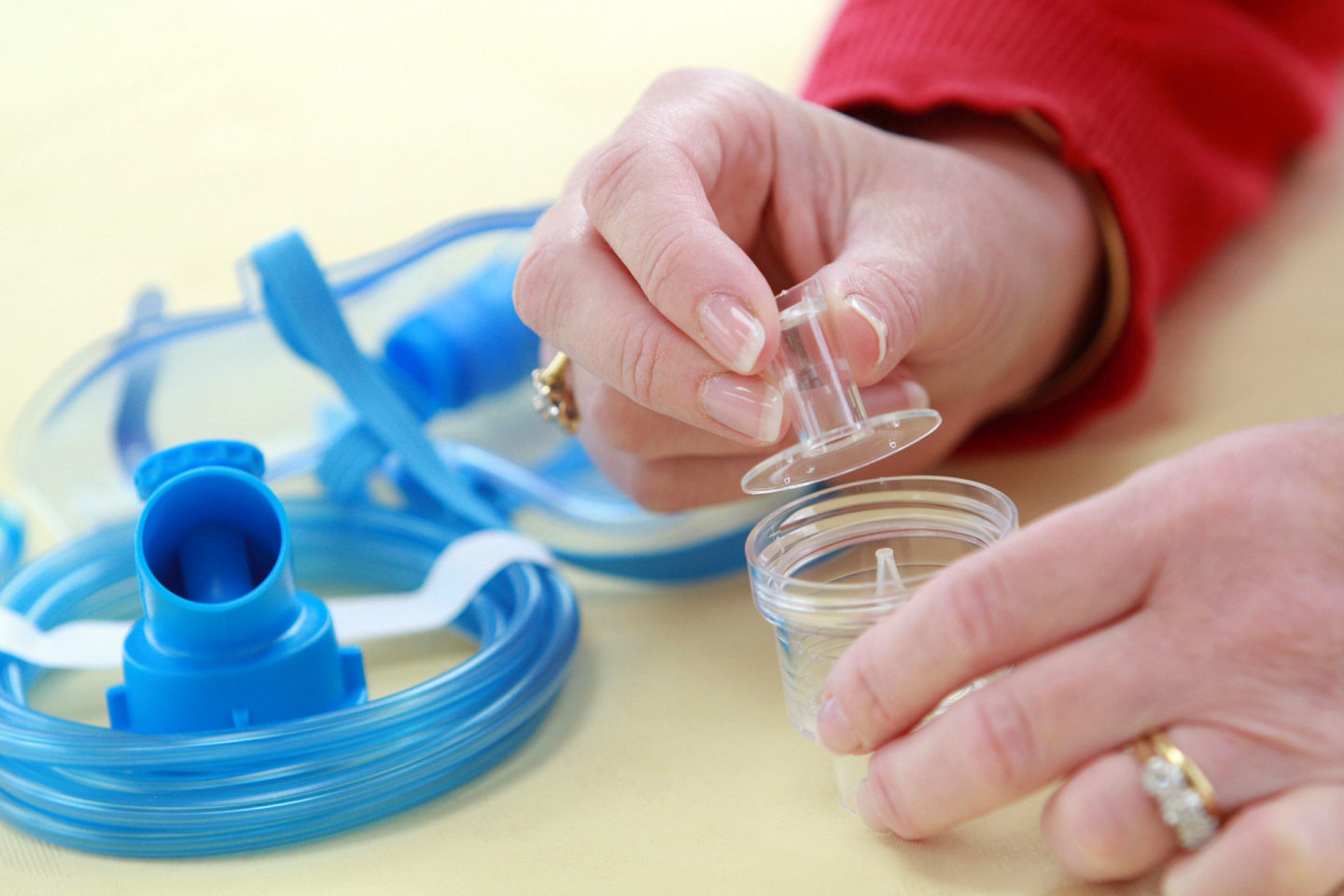Select Nebuliser Therapy Service
In this section
Nebuliser package
To deliver nebuliser therapy, the following equipment is required:
Compressor unit
This is the driving force that enables a nebuliser to convert the medicine into a gas. The compressor forces air through the drug solution into the nebuliser chamber, where it is converted into a fine mist. This mist is inhaled through a mask or a mouthpiece.
Nebuliser chamber
The nebuliser chamber is where the liquid medication is placed. There are different types of chambers, depending on the type of medication prescribed. For example, some medications such as antibiotics require a special type of nebuliser chamber – in this case, special instructions will be provided.
Tubing
Tubing is used to get air from the compressor to the bottom of the nebuliser chamber.
Mouthpiece/face mask
Your clinician will recommend either a mouthpiece or a face mask, depending upon which is most suitable to deliver nebuliser therapy.
A mouthpiece is most commonly used, as it prevents the medicine from getting into the eyes or causing irritation. You will then need to connect it to the nebuliser chamber, place it between the teeth and seal using your lips while inhaling the medicine.
Alternatively, you may be advised to use a face mask. This is usually recommended for patients with severe breathing problems, or a child. A face mask is placed over the mouth and nose and kept in place by a head strap.
Mixing the nebuliser medication
You can mix your nebuliser medication by following the instructions below:
- Unscrew the top of the nebuliser chamber.
- Open the vial drug solution by twisting off the top. Ensure the baffle is in place.
- Put the prescribed amount of medicine into the nebuliser chamber.
- Measure out the correct volume of drug solution and pour it into the nebuliser chamber.
- The medicine normally comes in individual doses.
- Screw on the top of the nebuliser chamber and attach the mouthpiece or face mask to the top of the chamber.
Note
You may be advised to increase the volume of your drug solution by diluting it, in which case, you should only use the solution prescribed for dilution (usually normal saline). Tap or distilled water should NEVER be used to mix the nebuliser medication.
If two different types of relievers are being used, then these can add together in the same chamber, but not all medicines can be mixed. Please seek advice from your clinician.
Cleaning
When using nebuliser equipment, please follow the cleaning and maintenance advice listed below:
After each treatment:
- Wash face, rinse mouth and wash hands.
- Disconnect the nebuliser chamber, wash it in warm, soapy water, and then rinse thoroughly with clean water and dry well. Remove the baffle from the chamber, clean separately, dry well and replace.
- After washing the chamber, reconnect it to the tubing and blow air from the compressor unit through it for a few seconds. This will dry the chamber and the tubing. The jet holes should be blown clear.
- Wipe the compressor clean with a damp cloth.
- Store the nebuliser machine in a dust and smoke-free area.
- Check the tubing regularly for kinking or holes, as these may affect the performance of your nebuliser machine.
Caution:
Do not immerse the nebuliser compressor in water.
Every three months:
- Replace the chamber, tubing and mouthpiece/face mask.
- Replace the inlet filter. Unscrew and replace with a new filter.
Note:
If you run out of consumables or filters, please call our Healthcare Helpline on 0800 121 4524, and we will arrange to send you new supplies.


